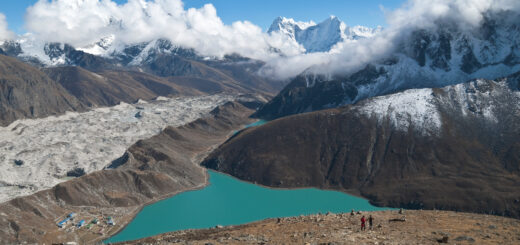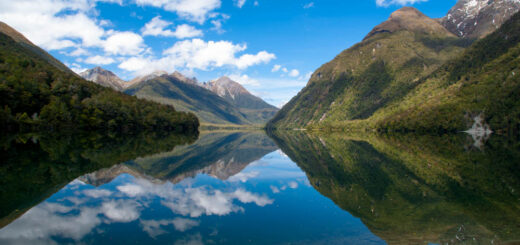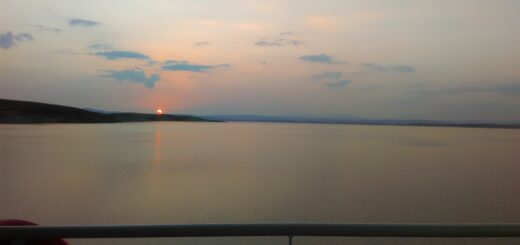Research Brief: Impacts of Variable Hydrology and Water Quality on Harmful Algal Blooms in Saskatchewan
0The ever-growing frequency and severity of harmful algal blooms (HABs) have left resource managers searching for answers as to what is causing HABs. While some variables have been more strongly connected to blooms, the impacts of hydrology and management are still largely unknown.

Hydrologic technician with the U.S. Geological Survey secures an ADCP (Credit: Carlos J. Lazo / USACE via Flickr Public Domain)
A 2023 study published in Ecosphere examined how water quality changes in response to changing source water inflow management. The study looks specifically at Buffalo Pound Lake, a shallow lake in arid Saskatchewan, Canada, to highlight how such lakes are more susceptible to flow management changes, which can influence the formation of cyanobacterial blooms.1
Methods
Buffalo Pound Lake was chosen due to its geographic characteristics, access to long-term continuous data, history of HABs, and significance as a drinking water resource. The lake’s variable flow regime also offers the ideal environment for a natural experiment that utilizes variable hydrology to assess changes in water quality over time and resulting bloom dynamics.
Dryland prairies–such as the area of Saskatchewan where the lake is located–are characterized by extreme climatic and hydrological variability. The extremes and variability result in cycles of extreme wetness and extreme dryness, which impact water quality and can promote the growth of HABs.
A water quality monitoring buoy located near the raw water intakes of the Buffalo Pound Water Treatment Plant has been gathering data since 2014. A total of seven years’ worth of data was used to assess the influence of variable hydrology and management on bloom dynamics.
The buoy is equipped with a YSI sonde at 0.8 meters that measures phycocyanin, chlorophyll-a, specific conductivity, turbidity, photosynthetically active radiation, pH, and dissolved oxygen. A NexSens T-Node string collects water temperature data from the top of the water column to the bottom (0.45, 0.77, 1.23, 2.18, and 3.18 meters).1
2014-2015 flow dynamics were largely characterized by natural landscape runoff, and 2016-2020 were described as managed flow years where inputs into Buffalo Pound were managed from an upstream reservoir, Lake Diefenbaker.
Results
Results of the seven-year analysis showed that phycocyanin was greater in years with managed reservoir inflow (2016-2020), likely due to Lake Diefenbaker being mesotrophic. In contrast, dissolved organic matter (DOM) and specific conductivity were greatest in years when landscape runoff was the dominant lake water source (2014–2015).1
The study makes specific note that it took multiple years for managed flows from the reservoir to reduce DOM. As a result, years with higher DOM and conductivity experienced more frequent and intense blooms.
Ultimately, the results of the study emphasize the importance of source water quality as well as quantity in response to growing water insecurity. In regions that experience variable hydrology and climatic changes, flow management is essential to protecting water resources.
Source
- Painter, Kristin J., Jason J. Venkiteswaran, and Helen M. Baulch. 2023. “ Blooms and Flows: Effects of Variable Hydrology and Management on Reservoir Water Quality.” Ecosphere 14(3): e4472. https://doi.org/10.1002/ecs2.4472













